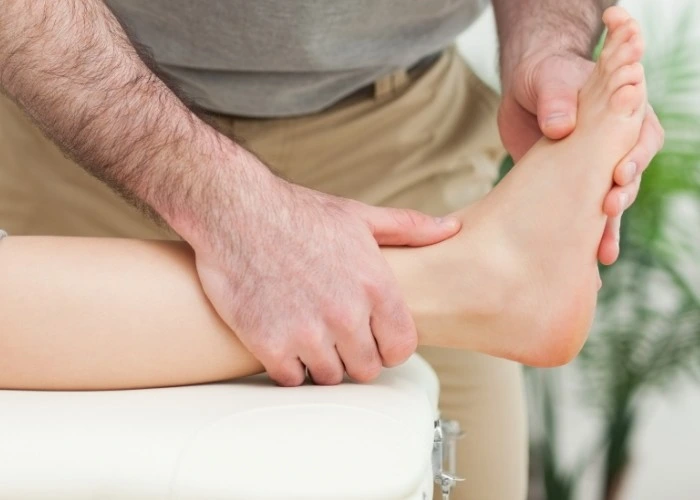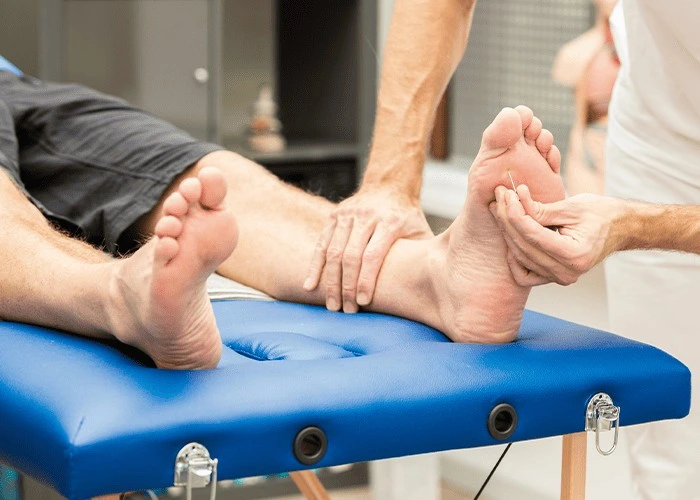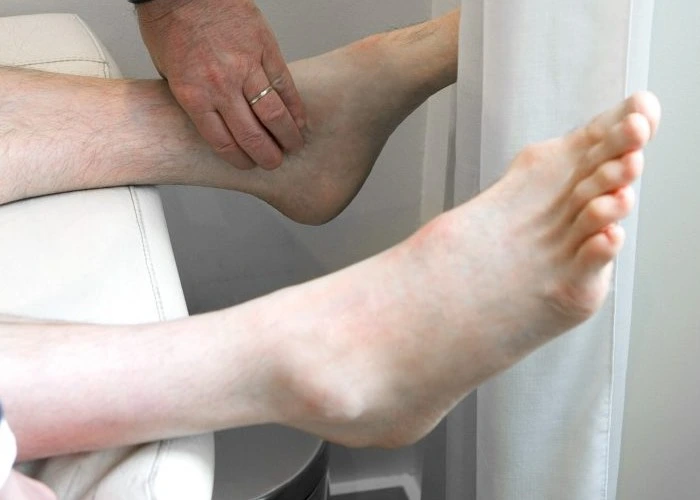Numbness and Tingling - Feet
Description
Numbness and tingling sensations may be sporadic or chronic. There may have been a slow gradual onset or it may come on suddenly.
Sensory disturbances are divided into:
- paresthesias: spontaneous, abnormal sensations, described as “pins and needles” or tingling.
- dysethesias: irritating sensations evoked by normal stimuli such as light touch.

Causes
Numbness and tingling in the feet, whether persistent or sporadic, often result from irritation or dysfunction of nerve tissue. While these sensations can stem from underlying pathology, they are more commonly caused by
irritation of nerve fibers—due to structural, chemical, emotional influences, or a combination thereof.
Common causes of numbness and tingling in the feet:
- Metabolic disorders (diabetes, uremia etc.)
- Vertebral subluxation (malposition) in the cervical spine
- Herniated cervical disc
- Cervical nerve root irritation
- Peripheral nerve irritation or compression (shoulder, arm, hand)
- Ischemia (inadequate blood circulation)
- Muscle tension
- Myofascial trigger points
- Irritation of soft tissue: vertebral discs, joint capsules, muscles, tendons and ligaments
- Spinal canal or foraminal stenosis
- Muscle weakness
- Sedentary lifestyle
- Repetitive movement
- Hyperinsulinism / blood sugar handling
- Central nervous system disorders (multiple sclerosis, ALS etc.)
- Liver or kidney disease
- Tumor
- Alcohol or drug related
- Residual effects of trauma (whiplash, fracture etc.)
- Side effects of medication
- Anxiety or depression
- Problems with teeth (past dental work)
Chiropractic / Applied Kinesiology Approach to Numbness and Tingling Sensations
Numbness and tingling in the feet are often related to nerve irritation. In some cases, the cause is a vertebral misalignment, in which chiropractic adjustment can be highly effective in restoring normal nerve function.
However, this is not always the sole factor. More commonly, multiple contributing elements are at play. For this reason, Dr. Morrison uses the
holistic approach of Applied Kinesiology, addressing structural, chemical, and
emotional components.




